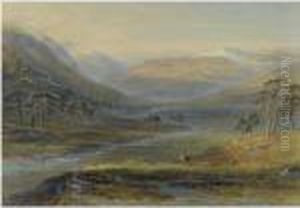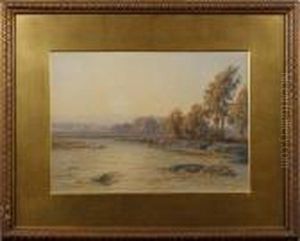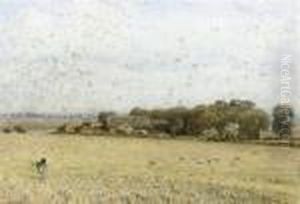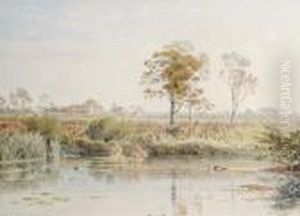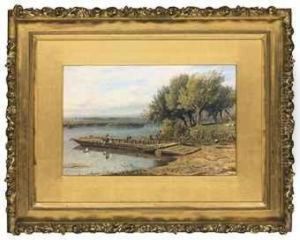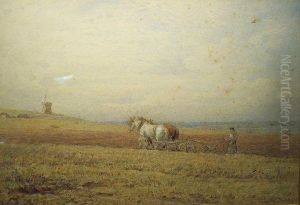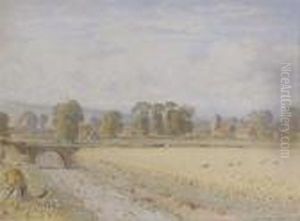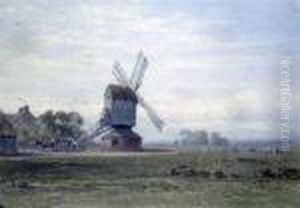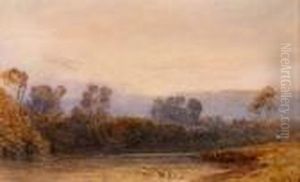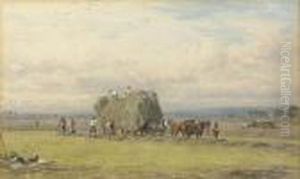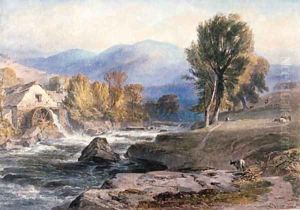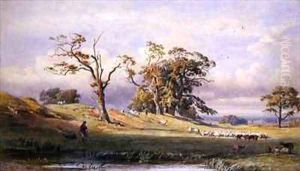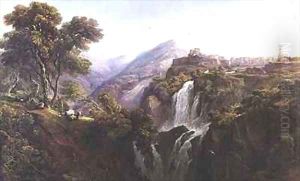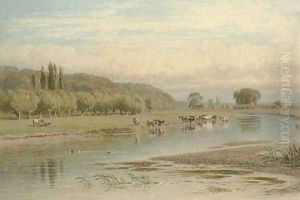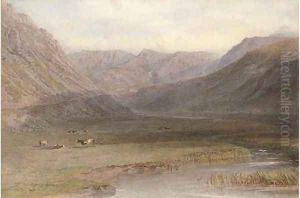George Arthur Fripp Paintings
George Arthur Fripp, known for his watercolor landscapes, was an influential British artist born on June 13, 1813, in Bristol, England. His father, Nicholas Fripp, was a successful surgeon, which afforded George a comfortable upbringing. Despite his family's medical background, George was drawn to art from an early age, and this passion would define his career and contributions to the Victorian art world.
George Fripp's artistic journey began under the tutelage of the painter James Baker Pyne, who was also from Bristol. Fripp honed his skills in watercolor, a medium that was gaining popularity in England during the 19th century. His early work was influenced by the English landscape tradition, particularly the works of artists such as J.M.W. Turner and John Constable. Fripp's landscapes were characterized by their attention to detail and use of light, capturing the changing moods of the British countryside with a delicate touch.
In 1834, Fripp moved to London to pursue his career in earnest. His talent was quickly recognized, and in 1845 he was elected an associate of the Royal Watercolour Society (RWS), an institution that played a key role in elevating the status of watercolor as a fine art. He would become a full member in 1850. Fripp exhibited regularly at the RWS and also at the Royal Academy, where his work was well received by critics and the public alike.
Fripp's landscapes often featured scenes from Wales and the West Country but he also painted views from his travels abroad. In 1853, he embarked on a tour of the Near East, visiting Egypt, Palestine, and Syria. The sketches and paintings he produced from this journey demonstrated his versatility and capacity to capture the essence of exotic locations, contributing to the Victorian fascination with the Orient.
Beyond his artistic endeavors, Fripp was also known for his teaching. He dedicated time to mentor young artists, including his nephew, Alfred Downing Fripp, who became a successful painter in his own right. George's influence extended through his connections and collaborations with other artists of the period. He was close friends with Samuel Palmer and other members of the Ancients, a group of artists who shared a romantic vision of the English landscape.
Fripp's later years were marked by continued success and recognition. He remained active in the art community until his health began to decline. George Arthur Fripp passed away on October 17, 1896, leaving behind a legacy of beautiful landscapes that continue to be appreciated for their contribution to British watercolor painting. His works can be found in various art collections, including those of the Victoria and Albert Museum in London and the Bristol Museum and Art Gallery in his hometown.



